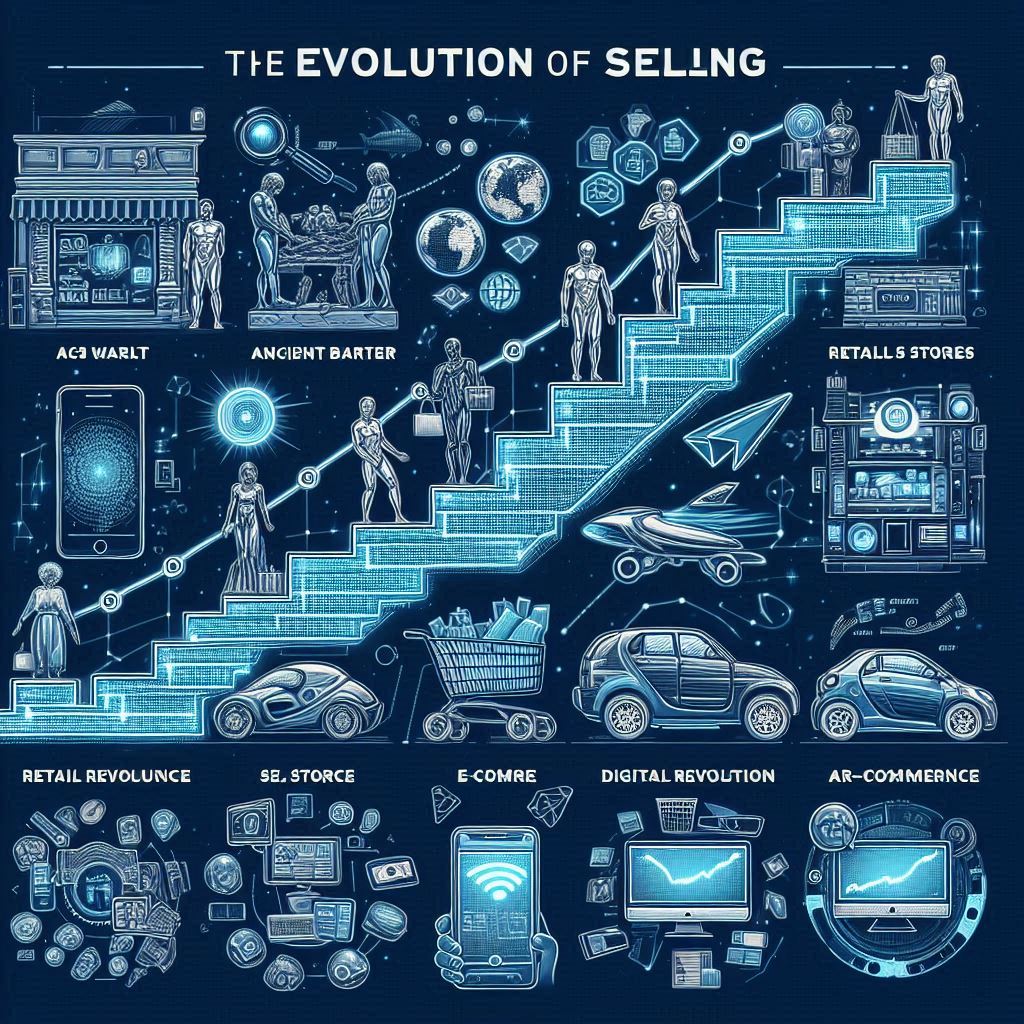
The Evolution of Selling: From Barter to Digital Commerce
Share
Selling has been an integral part of human civilization for thousands of years. From ancient barter systems to modern e-commerce, the way people buy and sell goods has continuously evolved, shaped by technological advancements, economic shifts, and changing consumer behaviors. In the 21st century, selling has transformed dramatically, driven by digital innovation, globalization, and data-driven strategies.
The psychology of selling is deeply rooted in human emotions, influencing purchasing decisions in ways that go beyond logic and practicality. Consumers often make buying choices based on feelings such as trust, excitement, fear of missing out (FOMO), or a sense of belonging.
Successful sales strategies tap into these emotions by crafting compelling narratives, using persuasive messaging, and creating experiences that resonate with buyers on a personal level.
The Origins of Selling: Barter and Early Trade
Before the invention of currency, early civilizations relied on barter systems, exchanging goods and services directly. Farmers traded crops for livestock, artisans exchanged handmade goods, and communities engaged in local trade to meet their needs. As societies expanded, the limitations of barter—such as the difficulty in finding mutually beneficial exchanges—led to the creation of money.
Ancient civilizations like Mesopotamia, Egypt, and China developed standardized currency, making transactions more efficient. Markets emerged as central hubs for commerce, where merchants sold goods ranging from spices to textiles. The Silk Road, established during the Han Dynasty, exemplified early international trade, connecting Asia, the Middle East, and Europe.
The Rise of Retail and Industrialization
The Industrial Revolution (18th–19th centuries) marked a turning point in selling. Mass production enabled businesses to manufacture goods at scale, leading to the rise of retail stores. Department stores like Macy’s and Harrods revolutionized shopping by offering a variety of products under one roof.
Advertising became a crucial selling tool, with newspapers, posters, and catalogs promoting products to a wider audience. The late 19th and early 20th centuries saw the emergence of door-to-door sales, direct marketing, and the first mail-order businesses, such as Sears, which allowed customers to purchase goods remotely.
The 20th Century: The Birth of Modern Sales Techniques
The 20th century introduced structured sales methodologies, including relationship selling, consultative selling, and the use of psychology in sales. The rise of television and radio advertising enabled businesses to reach mass audiences, while telemarketing and direct mail campaigns became popular.
Franchising expanded retail opportunities, with brands like McDonald’s and Coca-Cola leveraging standardized business models to scale globally. The late 20th century saw the emergence of personal computing and the internet, laying the groundwork for digital commerce.
Selling in the 21st Century: The Digital Revolution
The 21st century has witnessed an unprecedented transformation in selling, driven by technology and changing consumer expectations. Here are key developments:
1. E-Commerce and Online Marketplaces
The rise of e-commerce giants like Amazon, Alibaba, and eBay has reshaped retail. Consumers can now shop from anywhere, compare prices instantly, and receive products within days. Online marketplaces provide businesses with global reach, eliminating geographical barriers.
2. Social Media and Influencer Marketing
Platforms like Instagram, TikTok, and Facebook have become powerful sales channels. Brands leverage social media to engage customers, showcase products, and drive sales through influencer partnerships. Personalized content and targeted ads enhance customer experience.
3. Subscription-Based Selling
The subscription model has gained popularity, with companies like Netflix, Spotify, and Dollar Shave Club offering recurring services. This approach fosters customer loyalty and predictable revenue streams.
4. AI and Data-Driven Sales
Artificial intelligence (AI) and big data analytics have revolutionized selling. Businesses use AI-driven chatbots, predictive analytics, and personalized recommendations to enhance customer interactions. Machine learning helps optimize pricing, inventory management, and marketing strategies.
5. Mobile Commerce and Contactless Payments
Smartphones have made mobile commerce (m-commerce) a dominant force. Mobile apps, digital wallets, and contactless payments streamline transactions, making shopping more convenient. QR codes and NFC technology enable seamless purchases.
6. Ethical and Sustainable Selling
Modern consumers prioritize ethical and sustainable practices. Companies focus on eco-friendly products, fair trade, and corporate social responsibility to align with customer values. Transparency and authenticity drive brand loyalty.
The Future of Selling
Looking ahead, selling will continue to evolve with advancements in AI, blockchain, and immersive technologies like augmented reality (AR) and virtual reality (VR). The metaverse may introduce new ways to shop, interact, and experience products digitally.
Ultimately, selling has transformed from simple barter to sophisticated digital commerce. Businesses that adapt to technological shifts and prioritize customer-centric strategies will thrive in the ever-changing marketplace.


